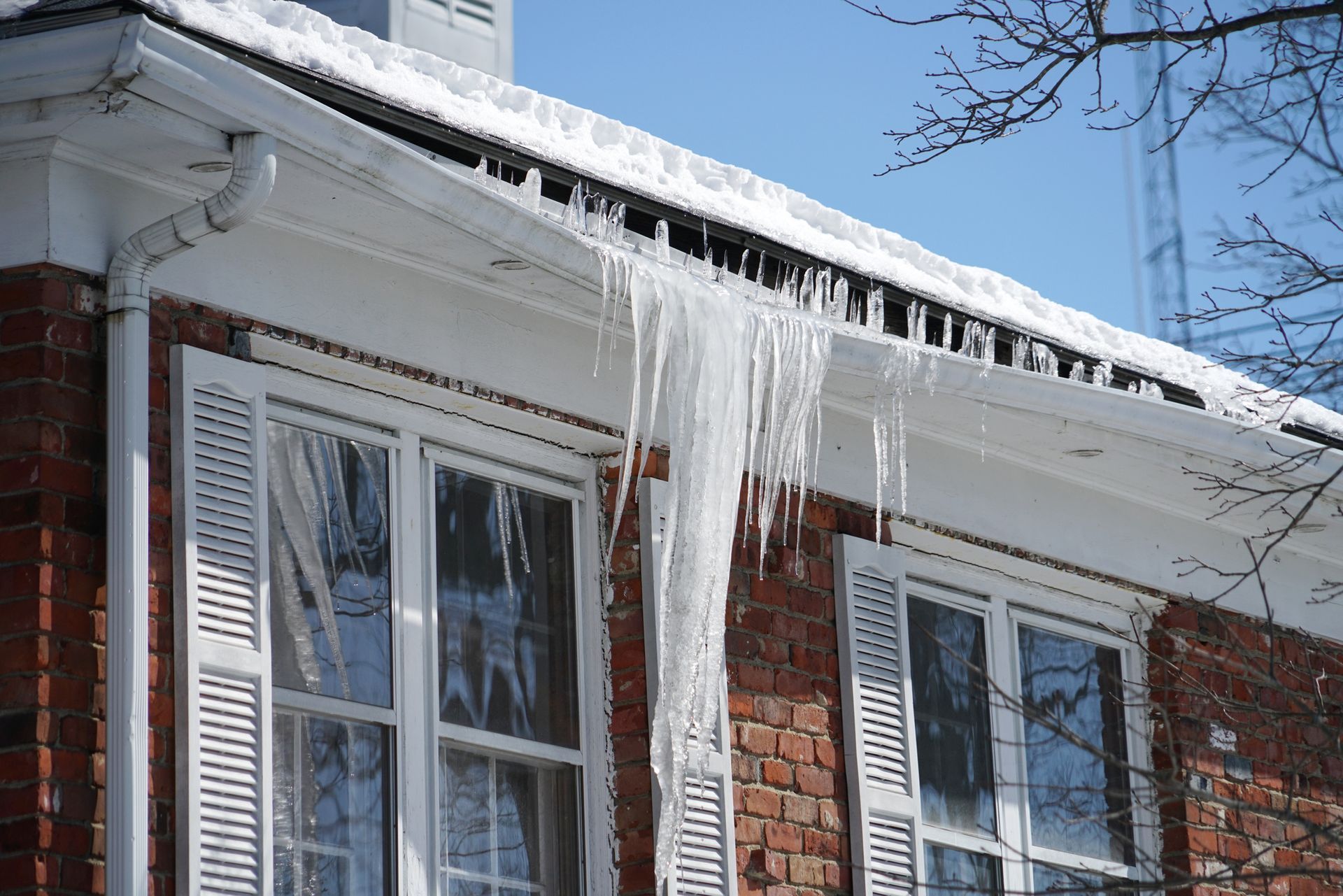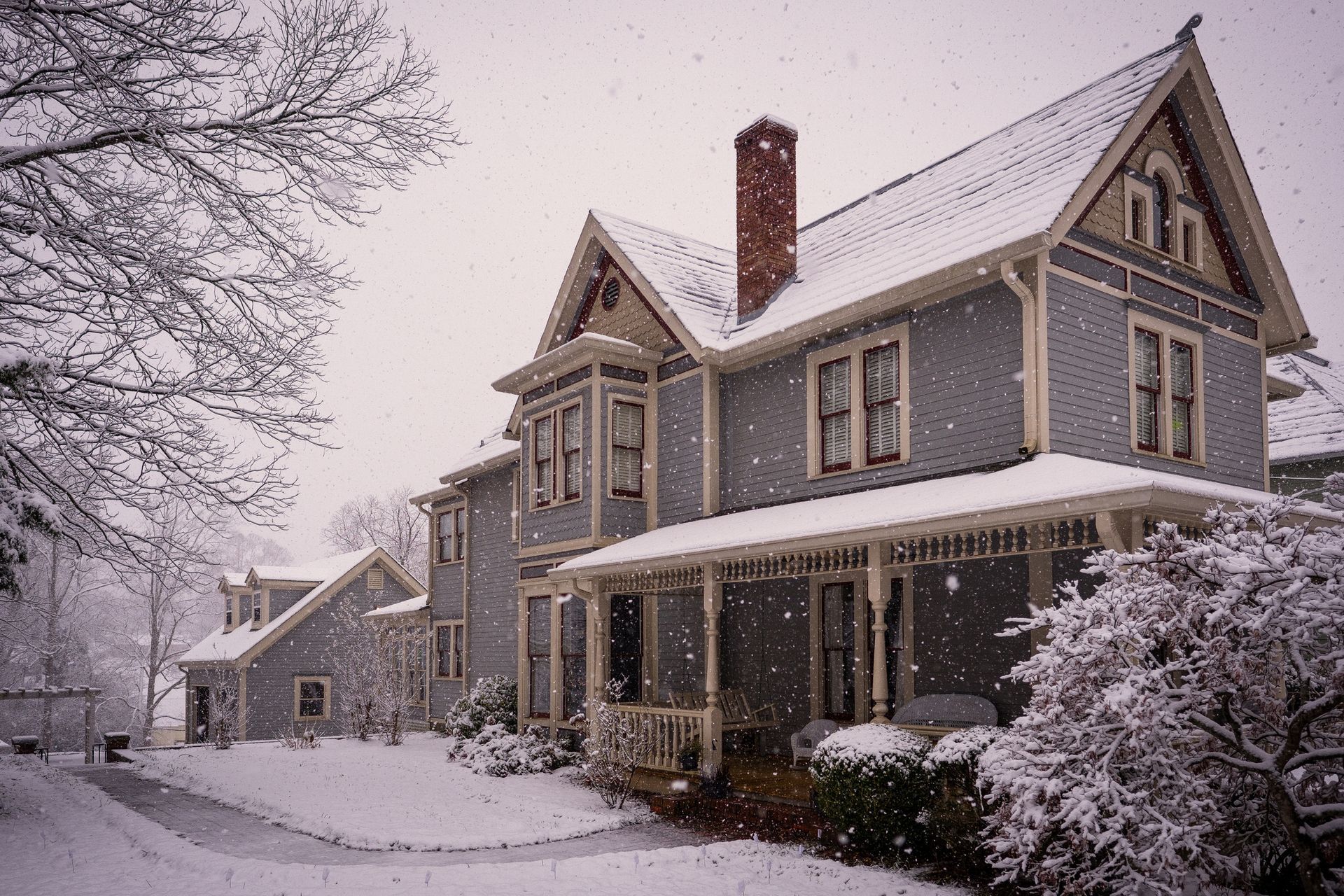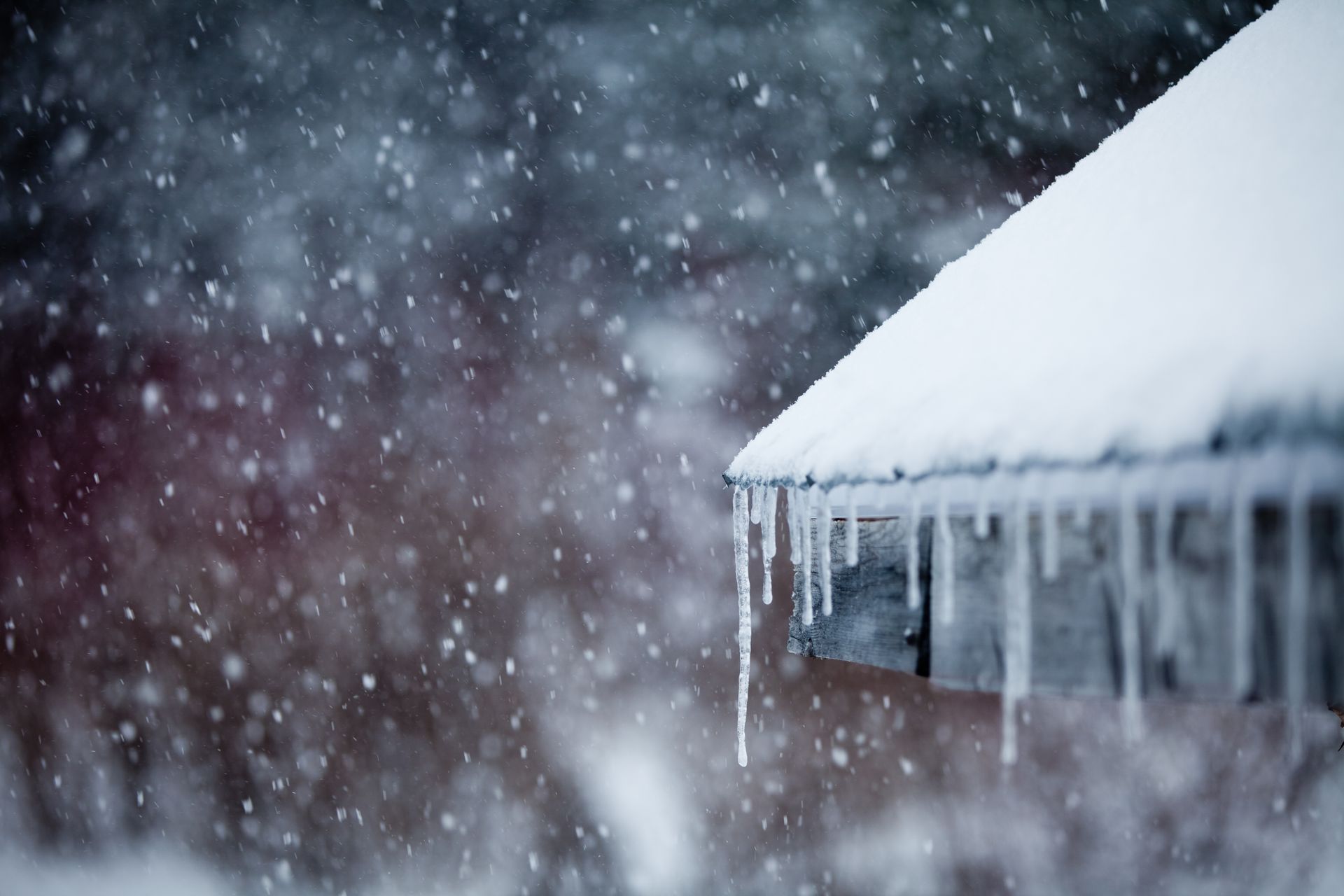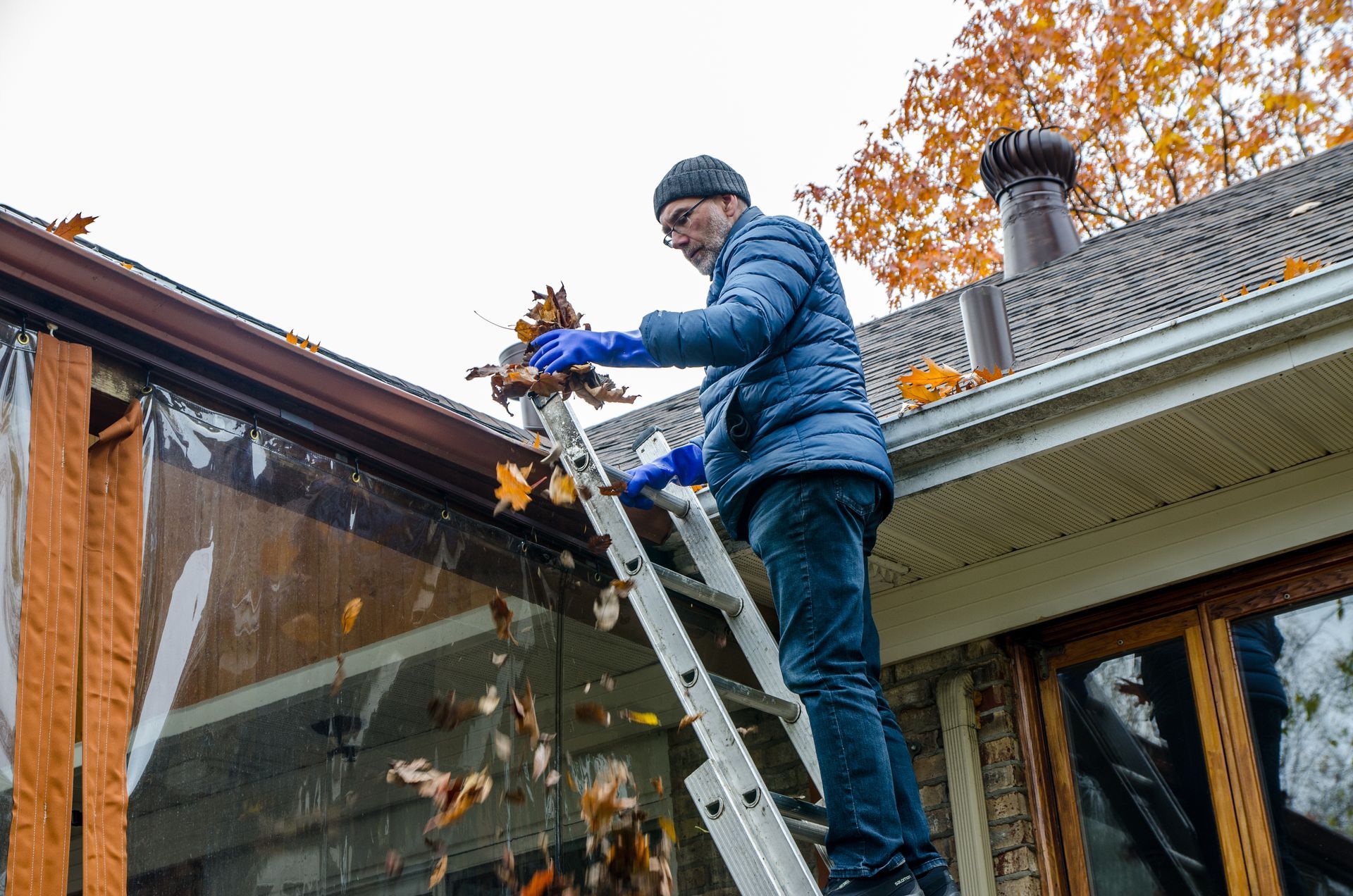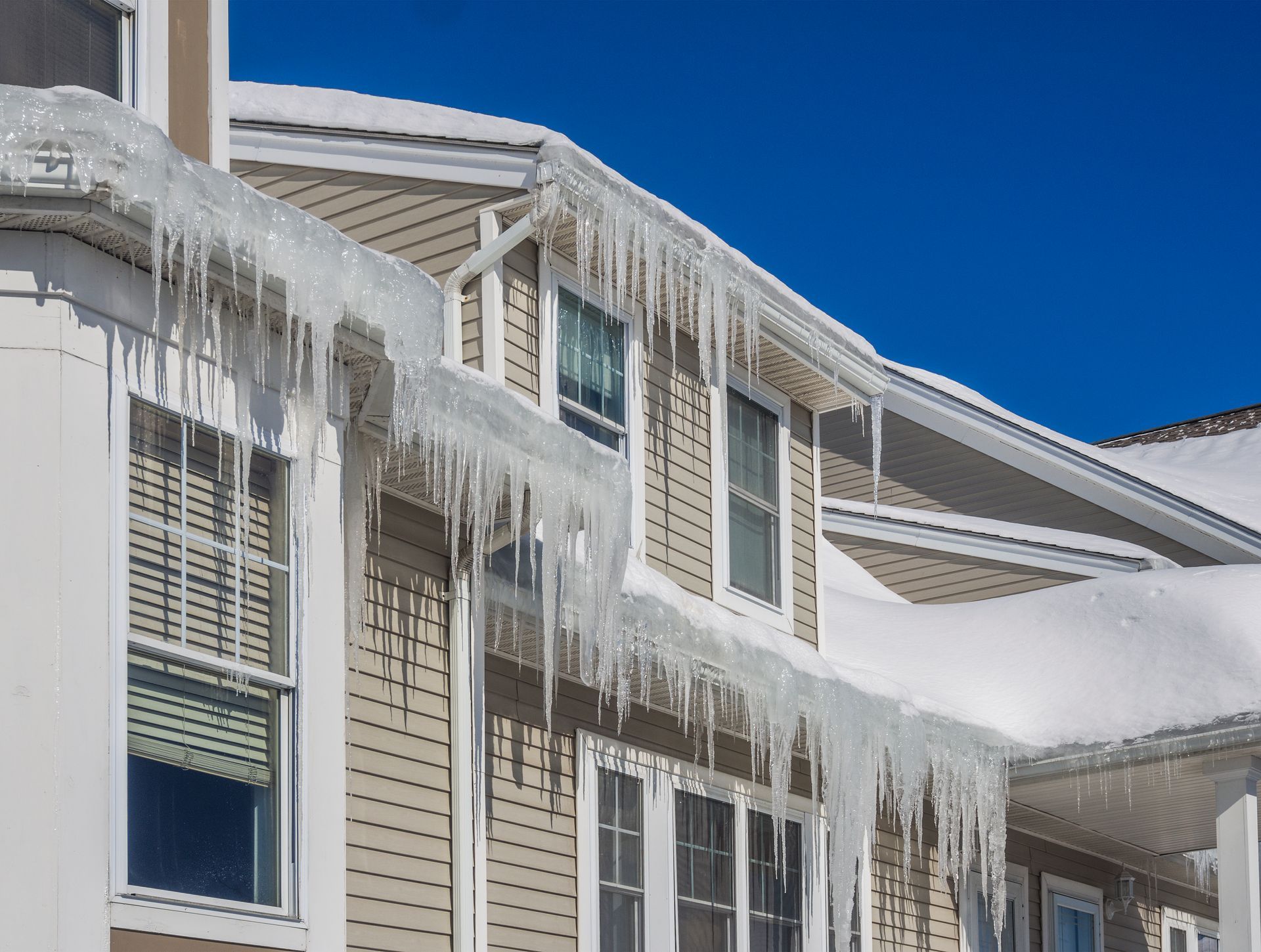What Are Ice Dams?An ice dam is a ridge of ice that forms along the edge of a roof. It typically occurs when the upper areas of the roof are warmer than the lower edges. Snow melts on the warmer parts, and as the water flows down, it refreezes at the colder eaves, creating a dam. This dam blocks further water from draining off the roof, causing it to pool behind the ice. Eventually, the trapped water can seep into the roofing materials and even leak into your home.
Signs of Ice DamsBeing able to recognize the signs of ice dams early on can help you address the issue before it causes significant damage. Here are some telltale signs to look for:
Icicles Along the RooflineLarge icicles hanging from your roof or gutters are often a sign of heat loss, which contributes to ice dam formation. If you notice these icicles consistently forming, it’s time to take a closer look at the attic insulation and ventilation.
Water Stains on Ceilings or WallsIf ice dams are already allowing water to seep under your shingles, you may start noticing water stains on your ceilings or walls. This is a serious sign of damage and indicates that water has infiltrated your roofing structure.
Peeling Paint or Wall DamageWhen water from ice dams enters your home, it can damage the paint and walls, causing them to bubble or peel. This can occur near the ceiling or along exterior walls.
Cold Drafts in Your HomeCold drafts around ceiling light fixtures or attic access points may indicate poor insulation. If heat is escaping through these areas, it could be contributing to ice dam formation.
How to Prevent Ice DamsThe good news is that with the right preparation, ice dams are largely preventable. Here are some effective ways to prevent them from forming on your Ohio roof this winter:
1. Improve Attic InsulationOne of the main causes of ice dams is inadequate attic insulation, which allows warm air to escape, heating the roof. Ensuring your attic is properly insulated helps maintain a consistent temperature on your roof. Consult with a roofing or insulation professional to determine the best type and amount of insulation for your home.
2. Ensure Proper VentilationIn addition to insulation, proper attic ventilation is crucial. Good ventilation allows cold air to circulate under the roof, preventing snow from melting unevenly. Installing ridge vents, soffit vents, or attic fans can help maintain a balanced temperature and reduce the chances of ice dam formation.
3. Seal Air LeaksEven with good insulation and ventilation, warm air can still leak into the attic through small cracks or openings. Sealing air leaks around light fixtures, chimneys, and attic hatches can help reduce the warm air that reaches your roof, further lowering the risk of ice dams.
4. Clean Your GuttersGutters play a significant role in directing water away from your home. Before winter hits, make sure your gutters are clear of leaves, sticks, and debris. Clogged gutters can prevent melted snow from draining properly, increasing the likelihood of ice buildup along the roof edge.
5. Install Heat CablesIn some cases, installing heat cables along your roof edge can help melt snow evenly and prevent ice dams. This method is especially helpful for roofs with complex shapes or those that tend to experience ice dams despite other preventative measures. Make sure to hire a professional to install heat cables safely.
What to Do If You Have an Ice DamIf you find an ice dam on your roof, it’s essential to take immediate action. However, removing it yourself can be dangerous, and improper techniques can cause further damage to your roof. Here’s what you can do:
Call a ProfessionalRoofing professionals have the tools and experience to safely remove ice dams. They may use steamers or other equipment to melt the ice without damaging your roof or shingles.
Use a Roof RakeIf you’re unable to call a professional right away, consider using a long-handled roof rake to gently remove snow from the roof’s edge. Be careful not to damage your shingles or put yourself in harm’s way while using the rake.
Avoid Using Salt or De-IcersSome homeowners try to melt ice dams with rock salt or chemical de-icers. However, these products can damage shingles and other roofing materials, potentially leading to even more costly repairs.
The Importance of Year-Round Roof MaintenanceWhile ice dams are a winter-specific problem, maintaining your roof throughout the year can help prevent them and other issues. Schedule annual roof inspections, keep an eye on your attic insulation and ventilation, and address minor issues before they escalate. These steps will keep your roof in peak condition and ensure it’s prepared for Ohio’s winter challenges.
Ice dams can cause significant damage to your roof, home, and wallet if left untreated. By understanding what causes ice dams and how to prevent them, you can protect your home and avoid costly repairs. Whether it’s adding insulation, improving ventilation, or sealing leaks, taking these proactive steps will help keep your Ohio roof safe from ice dams all winter long. Get all the roofing help you need this winter from the experts at
Final Touch!



